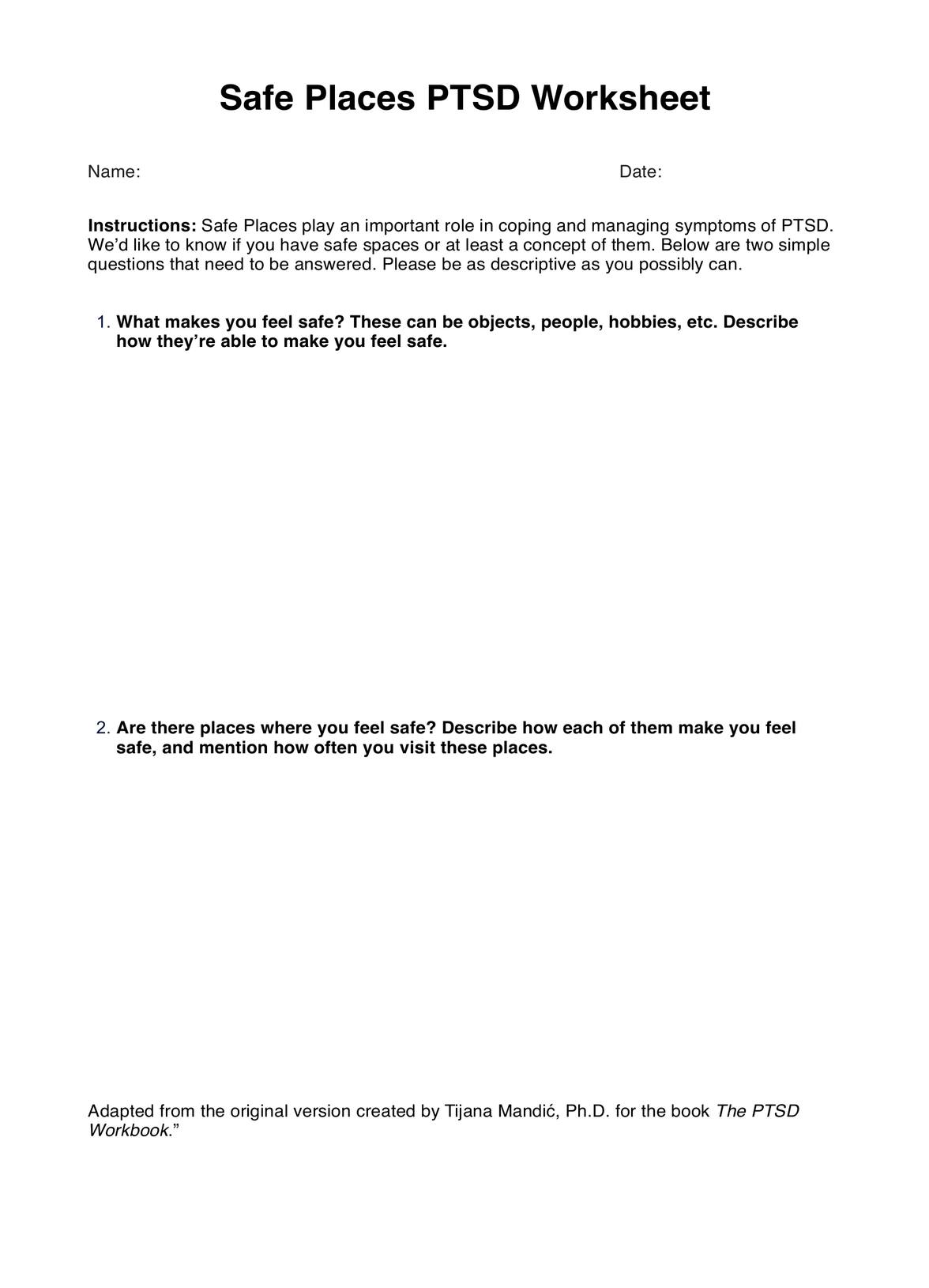This will depend on your patient. If they already know what to say right off the bat, it’s possible to accomplish this worksheet in five minutes, but don’t be surprised if it takes longer. It’s essential to give your patients the time and space they need to describe what makes them feel safe and their safe places.

Safe Places PTSD Worksheet
Help remind patients what their safe places are using the Safe Places PTSD Worksheet. This free PDF template will ensure client wellbeing and contribute to positive clinical outcomes.
Safe Places PTSD Worksheet Template
Commonly asked questions
The answer is no if we’re basing this on the instructions. The questions are simple enough to answer. That doesn’t mean there won’t be difficulty, though. Your patients are dealing with PTSD. That’s a touchy matter; they will likely have trouble discussing their trauma with you.
So, just because the instructions and questions are simple doesn’t mean they will have an easy time talking about their safe places and what they consider safe, so it’s best to break the ice and establish enough trust and rapport with them first.
We have another PTSD worksheet that revolves around safe spaces, My Ideal Safe Place PTSD Worksheet. That worksheet asks patients to write down ideas about their ideal safe space. They will even be asked to draw it!
This will also give you something to work with because you will have a written account of what counts as a safe space for your patients, and you will also have visual representations of what it looks like. This can be used for goal setting down the line during your therapy/counseling program.
EHR and practice management software
Get started for free
*No credit card required
Free
$0/usd
Unlimited clients
Telehealth
1GB of storage
Client portal text
Automated billing and online payments











